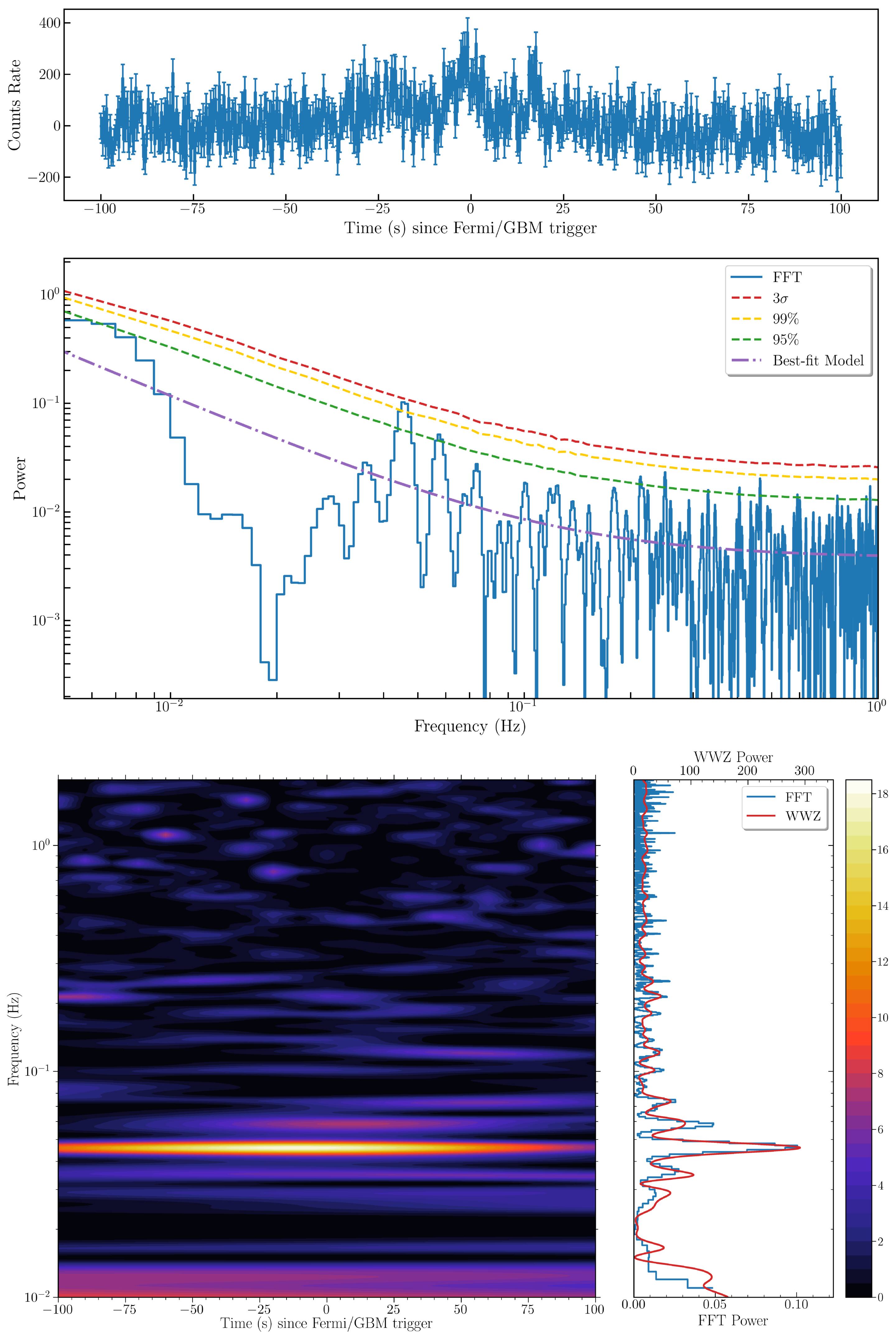
A new study led by the Yunnan Observatories of the Chinese Academy of Sciences has detected quasi-periodic oscillation (QPO) signals in an unusual gamma-ray burst (GRB) event, with the findings recently published in The Astrophysical Journal.
GRBs are short-timescale, highly energetic explosive phenomena typically associated with the collapse of massive stars or the mergers of compact objects. On July 2, 2025, the Gamma-ray Burst Monitor (GBM) aboard NASA's Fermi satellite detected an unusual high-energy burst—designated GRB 250702DBE—that triggered the Fermi/GBM system three times. Despite being named in accordance with standard GRB conventions, the event exhibited striking anomalies: its duration spanned several hours, far exceeding that of typical GRBs. The same source, also detected in the X-ray band by the Einstein Probe (EP) as EP250702a, has drawn scientific interest due to its long duration and unclear physical origin and radiation mechanisms.
Using Fast Fourier Transform (FFT) and Weighted Wavelet Z-transform (WWZ) techniques, the researchers conducted a detailed time-series analysis of Fermi/GBM gamma-ray data. While no QPO signals were identified in the first trigger (GRB 250702D), the second trigger (GRB 250702B) revealed a QPO signal with a frequency of approximately 0.024 Hz (period ≈ 41.7 seconds). The third trigger (GRB 250702E) yielded another QPO signal at a frequency of roughly 0.046 Hz (period ≈ 21.7 seconds). The researchers completed the analysis promptly following the event, producing key clues to unravel the burst's astrophysical origin and underlying physical processes.
The detected QPO signals may be linked to helical structures or precession within the relativistic jet generated by the source. If confirmed as a GRB, the event would stand as an extremely rare exception to typical GRB characteristics. Alternatively, the phenomenon could stem from a tidal disruption event (TDE) involving an intermediate-mass black hole—dubbed a "micro-TDE"—which could also produce such ultra-long gamma-ray emissions accompanied by quasi-periodic oscillations.
This research was supported by the National Key R&D Program of China, the Natural Science Foundation of China, and other funding sources.

The light curve of the third trigger (GRB 250702E) along with its FFT and WWZ power spectra. (Image by SONG Feifan)

86-10-68597521 (day)
86-10-68597289 (night)

52 Sanlihe Rd., Xicheng District,
Beijing, China (100864)

